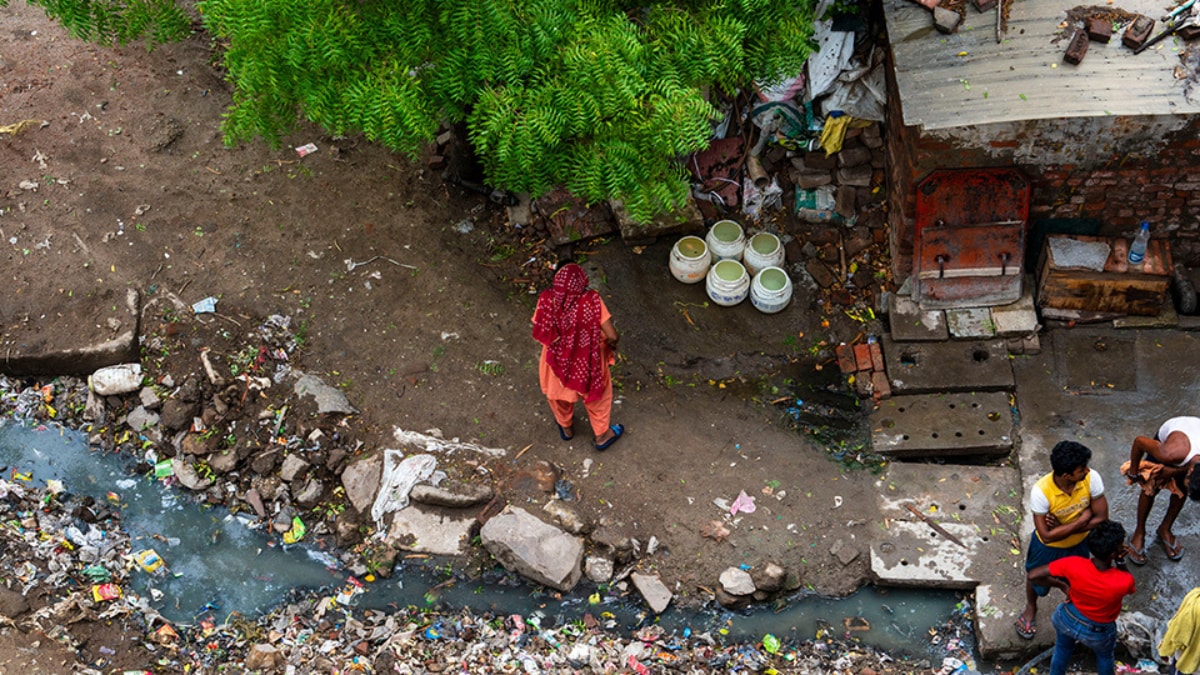- December 16, 2023
The Circular Sanitation Economy: A Sustainable Future – News18

Indians are thrifty by nature. We pride ourselves on stretching our money, making the most of our resources, and wasting nothing. Nowhere is this economy on better display than our kitchens: we have a pantheon of recipes that upcycle leftovers, and use up the wilted scraps lounging in our vegetable drawers. We donate our old clothing, our old furniture ends up in second-hand shops and our shopping centres include repair shops not just for clothing, shoes and consumer durables, but even our iPhones.
Waste not, want not; as the old adage goes. And yet, as the Indian economy shifts gears, we find ourselves wanting energy, resources, water. These resources are in short supply, and will continue to be so for the foreseeable future. There is immense value in minimising waste in upstream processes, but as it turns out, there is even more value in recovering these resources from the waste we generate. The traditional approach to sanitation, for instance, follows a linear process and consumes copious amounts of water, energy and chemicals. It also results in a substantial amount of waste, which finds its way into landfills and water bodies.
What if we could recover value from these wastes? What if we could, instead, turn them into ‘toilet resources’? That is both, the promise and the vision, of a circular economy that aims to eliminate waste and create continual use of resources by designing processes that are circular, regenerative and restorative.
In a circular sanitation economy, human waste (or toilet resources) is not seen as a problem to be disposed of, but as a potential source of energy, water and nutrients that can be recovered and reused for various purposes. Toilet resources can be converted into organic fertiliser for agriculture, biogas for cooking or electricity generation, or reclaimed water for irrigation or flushing. These products can create new revenue streams for sanitation service providers, reduce the dependence on external inputs such as chemical fertilisers or fossil fuels, and enhance the resilience of local communities and ecosystems.
A circular sanitation economy also leverages digital technologies to optimise the performance and efficiency of sanitation systems, and creates new business models and service delivery mechanisms. Smart sensors that monitor the real time quality and quantity of toilet resources provide real time analysis, improving operation and maintenance of sanitation facilities. This, in turn, helps reduce water and energy consumption, and ensures compliance with environmental standards. Moreover, digital platforms connect different stakeholders in the sanitation value chain, such as toilet users, service providers, and product manufacturers, and facilitate information sharing, feedback and payments.
The circular sanitation economy we’re describing isn’t a futuristic concept, but a reality that has already taken shape in India. A number of affordable, scalable and impactful solutions are already in play. For instance, FINISH Mondial collects toilet resources from low-income urban areas in India, and converts them into organic fertiliser. Saraplast provides portable toilets for events, construction sites and slums in India, and treats the collected toilet resources with an anaerobic digestion process that produces biogas and fertiliser. Zerodor offers waterless urinals that save water and prevent odour, and also recovers nutrients from urine that can be used as fertiliser.
These are just the start. The potential for applying such an economy in India is immense. According to a study by the Toilet Board Coalition, applying circular sanitation economy approaches could reduce the per person cost of providing sanitation from about USD 200 to a net value of just USD 10. Moreover, these efforts will help India achieve progress on multiple SDGs:
SDG 6 (clean water and sanitation)
SDG 7 (affordable and clean energy)
SDG 11 (sustainable cities and communities)
SDG 12 (responsible consumption and production)
SDG 13 (climate action)
and SDG 15 (life on land).
To realise the full potential of these innovations however, we first need to address the lack of awareness about the benefits and the safety of circular sanitation products amongst users. There is, understandably, a certain amount of hesitation in taking up these measures. They are perceived as dirty, and often dangerous. This is a healthy fear. We are, after all, talking about potentially hazardous human wastes here that can release pathogens and cause disease.
This is where creating the right frameworks will play a pivotal role. From a policy standpoint, financial incentives can go a long way in encouraging innovation in, and adoption of, circular sanitation practices. Establishing quality standards, creating platforms that facilitate information sharing, knowledge exchange and partnership, and establishing regulations will help create an ecosystem that all stakeholders can get behind. Lastly, communicating the benefits will help draw users in, and drive greater adoption.
Fortunately, the sanitation economy can count on one very vocal partner: Harpic. As India’s leading brand in the lavatory care segment, Harpic has championed the cause of toilet hygiene for decades now, through innovative and thought provoking campaigns and outreach programs. Harpic, together with News18, also created the Mission Swachhta aur Paani initiative 3 years ago. It is a movement that upholds the cause of inclusive sanitation where everyone has access to clean toilets. Mission Swachhta aur Paani advocates equality for all genders, abilities, castes and classes and strongly believes that clean toilets are a shared responsibility.
Since 2016, Harpic has also been the driving force behind the Harpic World Toilet College, setting it up with the stated objective of improving the quality of life of sanitation workers through their rehabilitation by linking them with dignified livelihood options. The college operates as a knowledge sharing platform with an aim to uplift the lives of the sanitation workers by educating them about their rights, health hazards, use of technology and alternate livelihood skills. Workers trained by the college are provided placement with various organisations.
Mission Swachhta aur Paani combines intelligent dialogue between the right stakeholders, ie. government officials, NGOs, activists, sanitation workers, educators and members of the public, with the audience reach News18 brings. It has brought to light many problems our sanitation infrastructure, and sanitation workers face. It also invites you to engage with this knowledge, and help move the conversation forward.
It is only when we break these taboos that we can unlock the true potential sanitation has in transforming our nation. We have recently had a big win: the Swachh Bharat Mission has solved the problem of toilet access for every Indian. Now, the next step is to make these toilets more sustainable, and dare we say it, even profitable.
Join us here to add your voice to the dialogue that is shaping a Swasth and Swachh Bharat.






